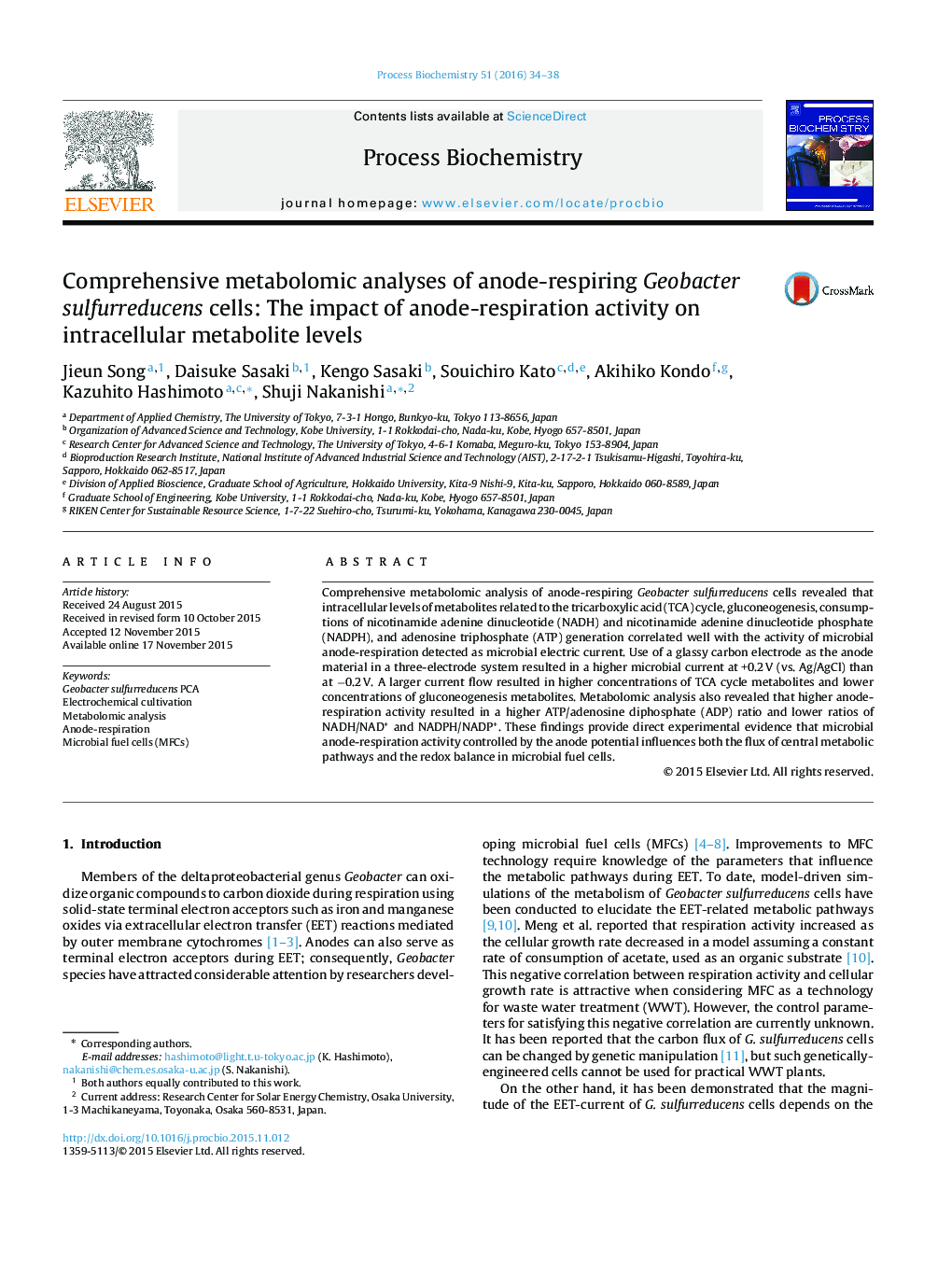| Article ID | Journal | Published Year | Pages | File Type |
|---|---|---|---|---|
| 34234 | Process Biochemistry | 2016 | 5 Pages |
•Comprehensive metabolomic analysis of anode-respiring Geobacter sulfurreducens was conducted.•Magnitude of the microbial current was dominant factor determining the metabolic state of cells.•Activation of TCA cycle and passivation of gluconeogenesis corresponded with larger current flow.
Comprehensive metabolomic analysis of anode-respiring Geobacter sulfurreducens cells revealed that intracellular levels of metabolites related to the tricarboxylic acid (TCA) cycle, gluconeogenesis, consumptions of nicotinamide adenine dinucleotide (NADH) and nicotinamide adenine dinucleotide phosphate (NADPH), and adenosine triphosphate (ATP) generation correlated well with the activity of microbial anode-respiration detected as microbial electric current. Use of a glassy carbon electrode as the anode material in a three-electrode system resulted in a higher microbial current at +0.2 V (vs. Ag/AgCl) than at −0.2 V. A larger current flow resulted in higher concentrations of TCA cycle metabolites and lower concentrations of gluconeogenesis metabolites. Metabolomic analysis also revealed that higher anode-respiration activity resulted in a higher ATP/adenosine diphosphate (ADP) ratio and lower ratios of NADH/NAD+ and NADPH/NADP+. These findings provide direct experimental evidence that microbial anode-respiration activity controlled by the anode potential influences both the flux of central metabolic pathways and the redox balance in microbial fuel cells.
Graphical abstractFigure optionsDownload full-size imageDownload as PowerPoint slide
